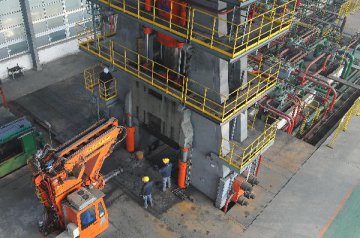
On Nov.23, the State Administration of Science, Technology and Industry for National Defense and the National Development and Reform Commission (NDRC) released the Guidance about Advancing the Construction and Application of Spatial Information Corridor Planned in the “Belt and Road” Initiatives. The guidance targets at that after 10 years of efforts, a well-appointed and high-efficient spatial information corridor that focuses on Southeast Asia, South Asia, West Asia, Central Asia and North Africa and also covers areas like Oceania, Central and Eastern Europe and Africa can be basically built. The guidance also proposes that the corridor can become a new highlight of the efforts made by China and countries along the “Belt and Road” route; China’s spatial information industry can make itself world-advanced in terms of marketization and internationalization in the corridor, lay solid foundation for the “going out” and boost the social/economic development of countries along the “Belt and Road” route.
The guidance defines tasks for the construction and application of the spatial information corridor.
Firstly, improve the coverage ability of spatial information. To this end, the construction of national satellite system must be accelerated.
Secondly, promote closer cooperation with international satellite systems. Namely, establish a coordination mechanism covering broadband communication satellite network, navigational satellite augmentation system, and joint observation system combining meteorological satellite and high-definition satellite through means like cooperation, integrated development, data exchange and joint observation of spatial resources.
Multiple industries will embrace new opportunities amid the construction of spatial information corridor.
It is proposed in the guidance to actively advance the development of commercial satellite systems. Measures proposed include advancing governments of countries along the “Belt and Road” route to purchase more spatial data and services and to keep exploring new government-led market operation mechanisms. Enterprises-based and market-oriented commercial spaceflight development model should be supported, and social and international commercial investment in commercial satellites and technology experiment satellites through models such as Public-Private-Partnership should be encouraged in a bid to improve spatial information corridor. Commercial companies engaged in this field are encouraged to provide the governments and people of all countries with market-oriented services.
The guidance proposes that spatial information technology should support Chinese enterprises to “go out”. Spatial information technology should focus on key infrastructure areas such as railway, water conservancy and hydropower, ports, information communication and etc., and support key projects of the state’s “Belt and Road” initiatives to apply spatial information. Spatial information technology should help with the “going out” of resources enterprises and major equipment; support the project construction of enterprises involved in oil, gas and mineral resources; provide spatial information support and monitoring services on natural resources and the impact on ecological environment throughout the exploration, exploitation, transport and supervision of resources. The implantation of satellite communication, navigation, remote sensing technologies and data services into the R&D of products by high-end equipment and intelligent manufacturing enterprises are supported to provide enterprises engaged in after-sales services for major equipment with spatial information services like remote monitoring and product maintenance. Alliance between large engineering contracting enterprises and spatial information services providers are encouraged, thus they can construct and operate major projects and spatial information services facilities as well as explore international market together.
It is proposed in the guidance to boost the export of equipment and services concerning spatial information. The export of whole-satellite, relevant products and standards, operation service and application systems should be supported and facilitated.
All-round participation of social capital in the construction of spatial information corridor should be encouraged.
The guidance encourages social capital to get involved in spatial infrastructure construction and operation services with market value such as high-definition earth-observing satellites, mobile communication satellite constellations and data collection satellite constellations; supports China’s satellite operation enterprises to set up industrial alliance with enterprises in countries along the “Belt and Road” route, develop cooperation in areas like satellite communication, satellite remote sensing and satellite navigation, and foster satellite operation service companies with international competitiveness. In addition, social capital is encouraged to get involved in the construction and operation of spatial-information-based industrial and regional cloud data center, improve “one-stop” service ability, and expand the development space of “spatial information +” value-added service industry. The guidance also proposes to foster a batch of spatial information service enterprises with strong self-development ability and international influence.
Translated by Jelly Yi




















Latest comments